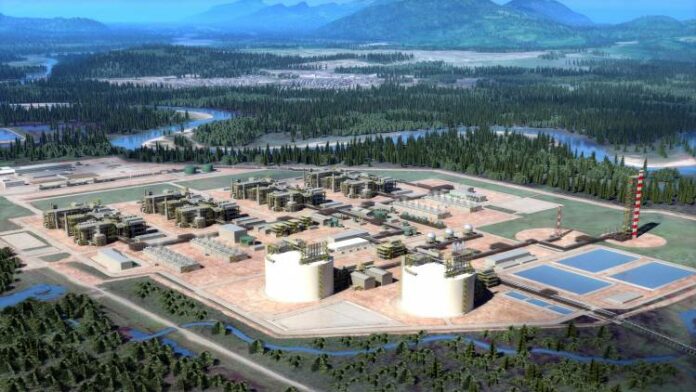LNG Canada is the largest of 13 LNG export terminals proposed for British Columbia and one of the country’s largest infrastructure projects ever.
The emergence of abundant, cheap US shale gas over the last decade has dramatically changed the North American gas market and, by extension, the world energy picture. One result of the US shale gas revolution has been to lessen its reliance on natural gas piped in from Canada.
Data from the US Energy Information Administration bears that out. In 2007, natural gas pipeline imports from Canada to the US were 3,782,708M ft3. In 2017, natural gas imports fell 22% to 2,962,689M ft3.
With natural gas pipeline exports to the US falling, Canadian gas producers shifted their gaze beyond North America to the more lucrative markets of Asia and Europe. The result is that since 2011, 24 LNG projects have been issued long-term export licences by Canada.
Since Canada only has one operational LNG terminal – Canaport LNG’s regasification import terminal located in Saint John, New Brunswick – it also set in motion proposals for developing 18 LNG export facilities. Those proposals include five in eastern Canada – two in Quebec, three in Nova Scotia – and 13 others on its west coast, all in British Columbia.
The largest of the LNG export terminals proposed is in British Columbia (BC). LNG Canada export terminal is one of the largest ever infrastructure projects in Canada. Construction on the Can$40Bn terminal has already begun. In January, it awarded contracts worth Can$937M after the facility’s first three months of construction.
LNG Canada will be located on a site near Kitimat, BC, on the Douglas River. In phase one, LNG Canada will have two LNG trains, with storage tanks and processing equipment, a rail yard and wharf that can berth two LNG carriers. A second phase will add two more trains. Annual LNG exports are estimated to be equivalent to 1,357.8Bn ft3 of natural gas per year, or 3.72Bn ft3 per day (Bcfd) inclusive of a tolerance allowance. If all goes according to plan, LNG Canada should be operational by 2021.
LNG Canada will be the first LNG export facility to bring Canadian natural gas to Asia, with China, South Korea and Japan eager consumers. China, in particular, would benefit from a steady supply of clean natural gas to replace its dirty coal-fired plant habit. Coal-fired plants generate about two-thirds of China’s electricity.
Forbes reported that domestic gas supply shortages in recent years have led China to soften its policy on displacing coal heating with natural gas.
China approved nearly US$6.7Bn worth of new coal mining projects last year, and it produced 3.55Bn tonnes – a 5.2% increase. Coal imports also jumped 9% last year.
One of the five joint venture (JV) partners in LNG Canada is PetroChina Company Limited. It owns a 15% stake in the JV through its subsidiary PetroChina Canada Limited; along with Royal Dutch Shell plc, through its affiliate Shell Canada Energy (40%); Petronas, through its wholly-owned entity North Montney LNG Limited Partnership (25%); Mitsubishi Corporation, through its subsidiary Diamond LNG Canada Ltd (15%); and Korea Gas Corporation, through its wholly-owned subsidiary Kogas Canada LNG (5%).
Source:lngworldshipping


